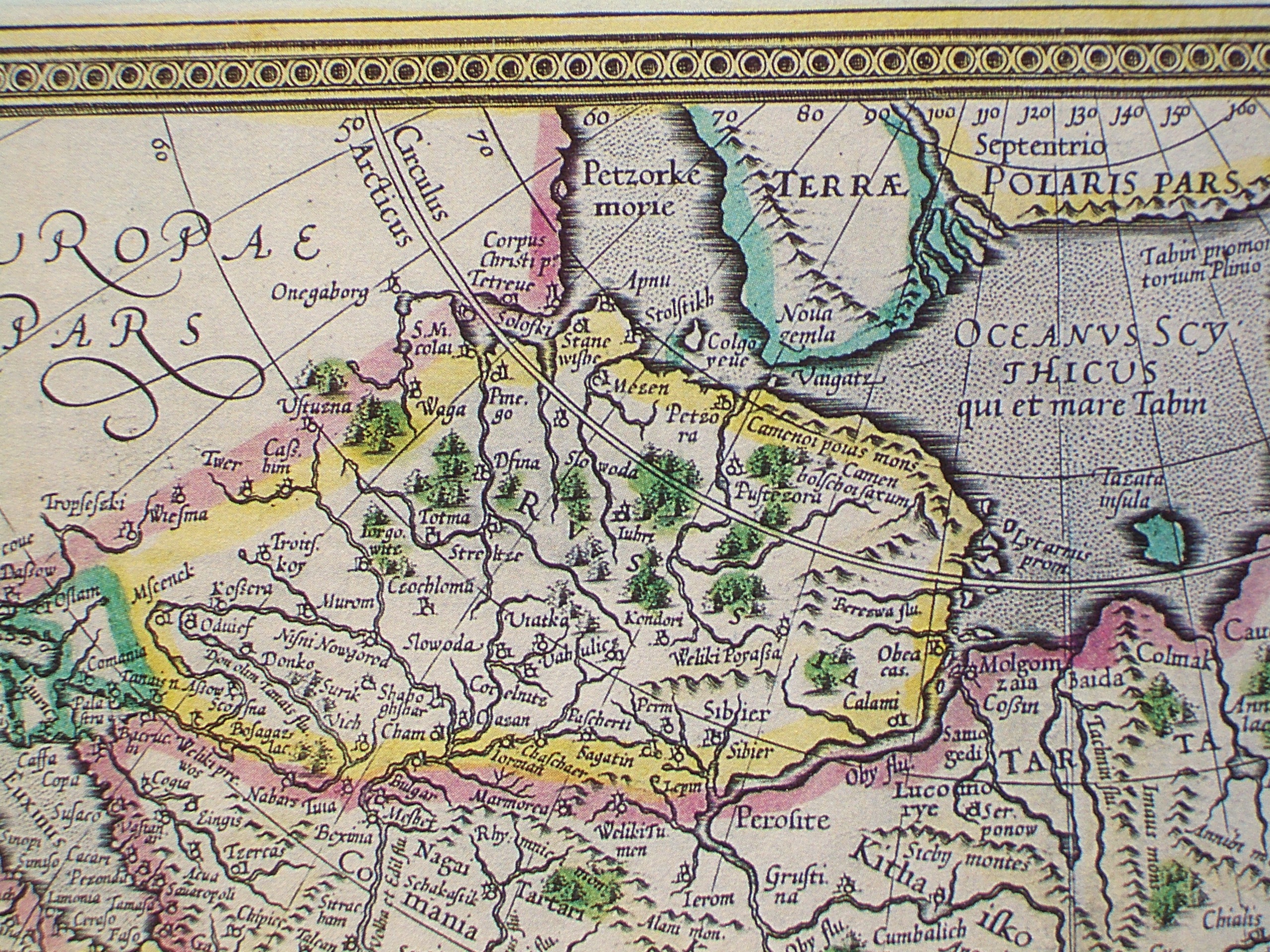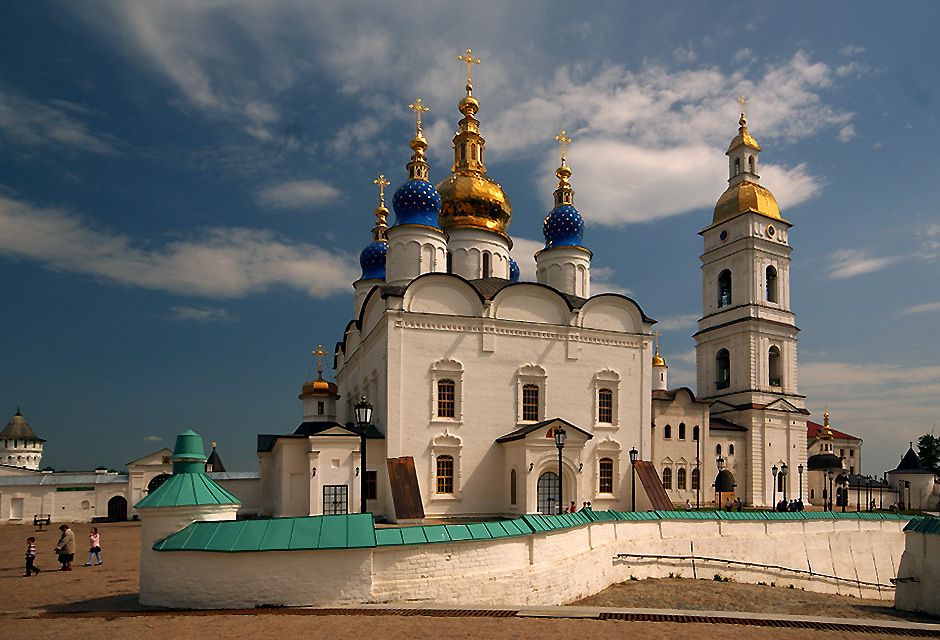|
Chimgi-Tura
Chimgi-Tura or Chingi-Tura (, ) was a medieval city in the 12th to 16th centuries located in Western Siberia. After the Russian conquest, it was refounded as Tyumen. Name The word “tura” (тора/tora) in Siberian Tatar means “city”. History According to Russian historian Hadi Atlasi, Taibugha founded the settlement which was then named Chinkidin in honor of Genghis Khan. The settlement later evolved into Chimgi-Tura. It was a capital of the Khanate of Sibir until the early 16th century, when its ruler Khan Muhammad decided not to remain at Chimgi-Tura, and chose a new capital named Qashliq located on the Irtysh. After the Cossack ataman Yermak Timofeyevich conquered the Siberian Khanate in the 1580s, the city of Chimgi-Tura was abandoned or burned. In 1586, the Russian fort Tyumen Tyumen ( ; rus, Тюмень, p=tʲʉˈmʲenʲ, a=Ru-Tyumen.ogg) is the administrative center and largest types of inhabited localities in Russia, city of Tyumen Oblast, Russia. ... [...More Info...] [...Related Items...] OR: [Wikipedia] [Google] [Baidu] |
Khanate Of Sibir
The Khanate of Sibir (; ) was a Tatar state in western Siberia. It was founded at the end of the 15th century, following the break-up of the Golden Horde.Сибирское ханство // Большая советская энциклопедия : / гл. ред. . — 3-е изд. — М. : Советская энциклопедия, 1969—1978. Throughout its history, members of the Shaybanid and Taibugid dynasties often contested the rulership over the Khanate between each other; both of these competing tribes were direct patrilineal descendants of Genghis Khan through his eldest son Jochi and Jochi's fifth son Shayban (Shiban) (died 1266). The area of the Khanate had once formed an integral part of the Mongol Empire, and later came under the control of the White Horde, and under the Golden Horde from 1242 to 1468. The Khanate of Sibir had an ethnically diverse population of Turkic peoples – Siberian Tatars and various Uralic p ... [...More Info...] [...Related Items...] OR: [Wikipedia] [Google] [Baidu] |
Tyumen
Tyumen ( ; rus, Тюмень, p=tʲʉˈmʲenʲ, a=Ru-Tyumen.ogg) is the administrative center and largest types of inhabited localities in Russia, city of Tyumen Oblast, Russia. It is situated just east of the Ural Mountains, along the Tura (river), Tura River in North Asia. Fueled by the Russian oil and gas industry, Tyumen has experienced rapid population growth in recent years, rising to a population of 847,488 at the 2021 Census. Tyumen is among the largest cities of the Ural (region), Ural region and the Ural Federal District. Tyumen is often regarded as the first Siberian city, from the western direction. Tyumen was the first Russian settlement in Siberia. Founded in 1586 to support Russia's eastward expansion, the city has remained one of the most important industrial and economic centers east of the Ural Mountains. Located at the junction of several important trade routes and with easy access to navigable waterways, Tyumen rapidly developed from a small military settle ... [...More Info...] [...Related Items...] OR: [Wikipedia] [Google] [Baidu] |
Cossack
The Cossacks are a predominantly East Slavic Eastern Christian people originating in the Pontic–Caspian steppe of eastern Ukraine and southern Russia. Cossacks played an important role in defending the southern borders of Ukraine and Russia, countering the Crimean-Nogai raids, alongside economically developing steppe regions north of the Black Sea and around the Azov Sea. Historically, they were a semi-nomadic and semi-militarized people, who, while under the nominal suzerainty of various Eastern European states at the time, were allowed a great degree of self-governance in exchange for military service. Although numerous linguistic and religious groups came together to form the Cossacks, most of them coalesced and became East Slavic–speaking Orthodox Christians. The rulers of the Polish–Lithuanian Commonwealth and Russian Empire endowed Cossacks with certain special privileges in return for the military duty to serve in the irregular troops: Zaporozhian Cossac ... [...More Info...] [...Related Items...] OR: [Wikipedia] [Google] [Baidu] |
Former Populated Places In Russia
A former is an object, such as a template, gauge or cutting die, which is used to form something such as a boat's hull. Typically, a former gives shape to a structure that may have complex curvature. A former may become an integral part of the finished structure, as in an aircraft fuselage, or it may be removable, being used in the construction process and then discarded or re-used. Aircraft formers Formers are used in the construction of aircraft fuselage, of which a typical fuselage has a series from the nose cone to the empennage, typically perpendicular to the longitudinal axis of the aircraft. The primary purpose of formers is to establish the shape of the fuselage and reduce the column length of stringers to prevent instability. Formers are typically attached to longerons, which support the skin of the aircraft. The "former-and-longeron" technique (also called stations and stringers) was adopted from boat construction, and was typical of light aircraft built until t ... [...More Info...] [...Related Items...] OR: [Wikipedia] [Google] [Baidu] |
Defunct Towns In Russia
{{Disambiguation ...
Defunct may refer to: * ''Defunct'' (video game), 2014 * Zombie process or defunct process, in Unix-like operating systems See also * * :Former entities * End-of-life product * Obsolescence Obsolescence is the process of becoming antiquated, out of date, old-fashioned, no longer in general use, or no longer useful, or the condition of being in such a state. When used in a biological sense, it means imperfect or rudimentary when comp ... [...More Info...] [...Related Items...] OR: [Wikipedia] [Google] [Baidu] |
Geography Of Tyumen Oblast
Tyumen Oblast () is a federal subject (an oblast) of Russia. It is located in Western Siberia, and is administratively part of the Ural Federal District. The oblast has administrative jurisdiction over two autonomous okrugs: the Khanty-Mansi and Yamalo-Nenets Autonomous Okrug. The oblast, including its autonomous okrugs, is the third-largest federal subject by area, and has a population of 3,395,755 (2010). (The rank is given without the autonomous okrugs' populations; the population and percentages are given for the territory of the oblast with the autonomous okrugs) Tyumen is the largest city and the administrative center of the oblast, and the first Russian settlement east of the Ural Mountains. Tyumen Oblast is the largest producer of oil and natural gas in the country, and has experienced an oil boom since the early 2000s. The rapid growth of the fuel industry has made the oblast by far the richest federal subject of Russia, with an average GDP per capita several times th ... [...More Info...] [...Related Items...] OR: [Wikipedia] [Google] [Baidu] |
Yermak Timofeyevich
Yermak Timofeyevich (, ; 1532 (supposedly) – August 5 or 6, 1585) was a Cossack ataman who started the Russian conquest of Siberia during the reign of the Russian tsar Ivan the Terrible. He is today a hero in Russian folklore and myths. Russian interests in the fur trade fueled their desire to expand east into Siberia. The Tatar Khanate of Kazan established by Ulugh Muhammad was the best entryway into Siberia. In 1552, Ivan the Terrible's modernized army toppled the khanate.Lincoln, p. 30 After the takeover of Kazan, the tsar looked to the powerful and affluent Stroganov merchant family to spearhead the eastward expansion. In the late 1570s, the Stroganovs recruited Cossack fighters to invade Asia on behalf of the tsar.Lincoln, p. 40 These Cossacks elected Yermak as the leader of their armed forces, and in 1582 Yermak set out with an army of 840 to attack the Khanate of Sibir.Lincoln, p. 41 On October 26, 1582, Yermak and his soldiers overthrew Kuchum Khan's Tatar empir ... [...More Info...] [...Related Items...] OR: [Wikipedia] [Google] [Baidu] |
Ataman
Ataman (variants: ''otaman'', ''wataman'', ''vataman''; ; ) was a title of Cossack and haidamak leaders of various kinds. In the Russian Empire, the term was the official title of the supreme military commanders of the Cossack armies. The Ukrainian version of the same word is '' hetman''. ''Otaman'' in Ukrainian Cossack forces was a position of a lower rank. Etymology The etymologies of the words ''ataman'' and '' hetman'' are disputed. There may be several independent Germanic and Turkic origins for seemingly cognate forms of the words, all referring to the same concept. The ''hetman'' form cognates with German '' Hauptmann'' ('captain', literally 'head-man') by the way of Czech or Polish, like several other titles. The Russian term ''ataman'' is probably connected to Old East Slavic ''vatamanŭ,'' and cognates with Turkic ''odoman'' ( Ottoman Turks). The term ''ataman'' may have also had a lingual interaction with Polish ''hetman'' and German ''hauptmann''. Suggestions hav ... [...More Info...] [...Related Items...] OR: [Wikipedia] [Google] [Baidu] |
Qashliq
Qashliq, Isker or Sibir () was a medieval (14th–16th century) Siberian Tatar fortress, in the 16th century the capital of the Khanate of Sibir, located on the right bank of the Irtysh River at its confluence with the ''Sibirka'' rivulet, some 17 km from the modern city of Tobolsk. The fortress is first mentioned in Russian sources of the 14th century. The period of the most development was in the first half of the 16th century. In 1582 the troops of Cossack ataman Ataman (variants: ''otaman'', ''wataman'', ''vataman''; ; ) was a title of Cossack and haidamak leaders of various kinds. In the Russian Empire, the term was the official title of the supreme military commanders of the Cossack armies. The Ukra ... Yermak seized and ruined Qashliq. The ruined city was retaken by the Siberian Tatars in 1584 only to be lost forever in 1586. The nearby city of Tobolsk was founded in 1587. Sources differ on the exact location of the fortress. Most give the distance upriver f ... [...More Info...] [...Related Items...] OR: [Wikipedia] [Google] [Baidu] |
Irtysh
The Irtysh is a river in Russia, China, and Kazakhstan. It is the chief tributary of the Ob (river), Ob and is also the longest tributary in the world. The river's source lies in the Altai Mountains, Mongolian Altai in Dzungaria (the northern part of Xinjiang, China) close to the border with Mongolia. The Irtysh's main tributaries include the Tobol, Demyanka and the Ishim (river), Ishim. The Ob-Irtysh system forms a major drainage basin in Asia, encompassing most of West Siberian Plain, Western Siberia and the Altai Mountains. Geography From its origins as the ''Kara-Irtysh'' (Black Irtysh) in the Mongolian Altay mountains in Xinjiang, China, the Irtysh flows northwest through Lake Zaysan in Kazakhstan, meeting the Ishim (river), Ishim and Tobol rivers before merging with the Ob near Khanty-Mansiysk in western Siberia, Russia after . The name Black Irtysh (''Kara-Irtysh'' in Kazakh, or ''Cherny Irtysh'' in Russian) is applied by some authors, especially in Russia and Kazakh ... [...More Info...] [...Related Items...] OR: [Wikipedia] [Google] [Baidu] |
Middle Ages
In the history of Europe, the Middle Ages or medieval period lasted approximately from the 5th to the late 15th centuries, similarly to the post-classical period of global history. It began with the fall of the Western Roman Empire and transitioned into the Renaissance and the Age of Discovery. The Middle Ages is the middle period of the three traditional divisions of Western history: classical antiquity, the medieval period, and the modern period. The medieval period is itself subdivided into the Early, High, and Late Middle Ages. Population decline, counterurbanisation, the collapse of centralised authority, invasions, and mass migrations of tribes, which had begun in late antiquity, continued into the Early Middle Ages. The large-scale movements of the Migration Period, including various Germanic peoples, formed new kingdoms in what remained of the Western Roman Empire. In the 7th century, North Africa and the Middle East—once part of the Byzantine Empire� ... [...More Info...] [...Related Items...] OR: [Wikipedia] [Google] [Baidu] |





